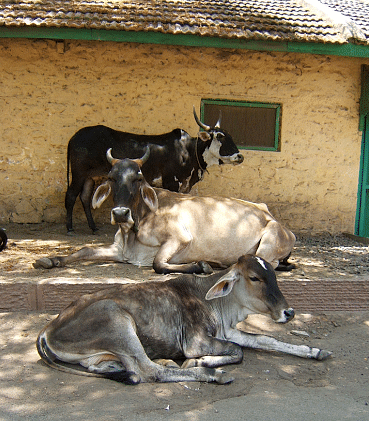Even at the time of formulation of the Constitution, deep divisions surfaced in the Constituent Assembly over the fate of the cow. The result was an inherently contradictory directive principle.
That prohibition of cow slaughter has been enshrined in the Constitution is an assertion which has been emphatically repeated many times over in the last few years. As attacks on minority groups suspected of smuggling or slaughtering cattle continue unabated, the condemnation of the attacks is invariably accompanied by caveats and qualifications.
The government, it is often stressed, condemns violence in the name of cow protection. However, few debates are allowed to go by without unequivocal affirmations of the government’s deep commitment to the protection of cows from slaughter.
One of the most shocking examples of this was Rajasthan Home Minister G.C. Kataria’s statement in the aftermath of Pehlu Khan’s killing. Both sides were to be blamed for the death of Khan since cow smuggling is banned in the state, he said.
The clash between the fundamental right to life and the legally unenforceable duty of the state to protect cows from slaughter may have been shocking for the modern-day conscience of a few. But this debate goes back many decades.
Even at the time of the formulation of the Constitution, deep divisions surfaced in the Constituent Assembly over the fate of the cow. Should prohibition of cow slaughter be a fundamental right, it would stand in stark contradiction to the secular credentials of the new nation-state. However, even then, there were umpteen voices which had limited patience for secular pretence. R.V. Dhulekar, for example, said “…our Hindu society, or our Indian society, has included the cow in our fold. It is just like our mother. In fact, it is more than our mother. I can declare from this platform that there are thousands of persons who will not run at a man to kill that man for their mother or wife or children, but they will run at a man if that man does not want to protect the cow or wants to kill her”.
Raghu Vira, a member of the Constituent Assembly, was even more explicit in his views. Gau hatya, he famously asserted, was akin to Brahma hatya.
Interestingly, some Muslim members too wanted to save their community the façade of secularism. Z.H. Lari, for example, said, “It is for the majority to decide one way or the other…if the House is of the opinion that slaughter of cows should be prohibited, let it be prohibited in clear, definite and unambiguous words. I do not want that there should be a show that you could have this thing although the intention may be otherwise.”
The article being referred to is Article 48 of the Constitution. It states, “The State shall endeavour to organise agriculture and animal husbandry on modern and scientific lines and shall, in particular, take steps for preserving and improving breeds, and prohibiting the slaughter of cows and calves and other milch and draught cattle.”
It has been pointed out by many that the wording of the article is inherently contradictory. While the first part of the Article underscores the need to organise animal husbandry on “modern” and “scientific” lines, the second part is symptomatic of the secular state’s compulsions to placate majoritarian anxieties. Surely, even now, proponents of prohibition of cow slaughter make no bones about invoking the religious sentiments attached to the cow over economic and scientific arguments.
In a submission, which proved to finally determine the ultimate fate of prohibition of cow slaughter at the time, Thakur Bhargava, a Congress member from East Punjab and an avowed Hindu traditionalist, said, “I do not want that due to its (Article 48) inclusion in the Fundamental Rights, non-Hindus should complain that they have been forced to accept a certain thing against their will…” – an assertion which finds limited traction among traditionalists today.
It was after these prolonged, acrimonious debates that prohibition of cow slaughter finally found its place in the Constitution at the level of the directive principles. This stipulation has been rightly described by Christophe Jaffrelot in his book, ‘The Hindu Nationalist Movement and Indian Politics: 1925 to the 1990s’ as an “ambiguous compromise”. While the emphatic claims of traditionalists to protect the cow could not be ignored by the liberal architects of the secular democracy, they sought to do so in a manner which would not be inimical to the carefully crafted secular credentials of the Constitution.
Apart from Article 48, another directive principle which has been hotly contested ever since its formulation is Article 44, which affirms that the state shall endeavour to secure a uniform civil code. It is interesting to note that Hindu conservatives, who are pushing to make both these directives legally enforceable laws, are actually invoking ideologically opposite arguments while doing so. On the one hand, while calling for complete bans on cow slaughter, openly religious reasons are being cited, and on the other, secular arguments are being raised to enforce the uniform civil code throughout the country.
The contradiction aside, it is crucial to remember that directive principles are ultimately only guidelines for the state, which cannot be given supremacy over fundamental rights, since doing so is in violation, and not in keeping, with the Constitution.
Sanya Dhingra is a Reporter with ThePrint. You can follow her on Twitter @DhingraSanya



